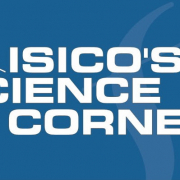Outcomes evaluating quality of life and their measurement properties in early-onset Scoliosis: a systematic review
Every year, the Italian Scoliosis Study Group selects the best published papers on conservative spine treatment from the global scientific literature.
Here is the abstract from one of these papers.
Outcomes Evaluating Quality of Life and Their Measurement Properties in Early-onset Scoliosis:
A Systematic Review
Charles Baird, James Archer, Adrian Gardner, Alison Rushton, Nicola R Heneghan
Journal Pediatric Orthopedic. 2022 Oct 1;42(9) : e917-e924. doi: 10.1097/BPO.0000000000002161. Epub 2022 Apr 13.
Abstract
Introduction: Early-onset scoliosis (EOS) is a spinal deformity affecting children under the age of 10. Understanding the impact of EOS on quality of life can be achieved through appropriate patient/carer-reported outcome measures (PROMs). The aim of this systematic review was to identify, evaluate and summarize the evidence for the measurement properties of health-related quality of life (HR-QoL) outcome measures in the EOS population.
Methods: A 2-stage search methodology was conducted across the PubMed, MEDLINE, EMBASE, EMCARE, PsychINFO, and CINAHL databases. Search 1 identified PROMs used to evaluate the quality of life in EOS, and search 2 identified studies of the measurement properties of these PROMs. Two reviewers performed searching, study screening and selection and assessed studies for risk of bias using the Consensus-based Standards for the selection of health Measurement INstruments (COSMIN) Risk of Bias checklist. One reviewer performed data extraction. Evidence for each measurement property per PROM was summarized and evaluated using a modified GRADE approach.
Results: Search 1 identified 19 (10 disease-specific, 9 generic) PROMs that have been used to assess HR-QoL or a relevant domain in the EOS population. Search 2 identified only one PROM (the 24-item Early-Onset Scoliosis Questionnaire, EOSQ) with eligible studies (n=4) evaluating measurement properties. There is low-quality evidence for sufficient content validity, very low-quality evidence for sufficient reliability and low-quality evidence for sufficient criterion validity, specifically regarding the pulmonary function domain) of the EOSQ. Construct validity and responsiveness were rated as indeterminate. There were no studies on measurement error.
Conclusions: Our search strategy found that measurement properties have only been evaluated for one PROM, the EOSQ. There is low-quality evidence for sufficient measurement properties for the EOSQ in patients under the age of 10 with EOS. Further research is needed to improve the quality of evidence for EOSQ measurement properties and investigate other PROMs in this population.
Level of evidence: Level II.







Leave a Reply
Want to join the discussion?Feel free to contribute!